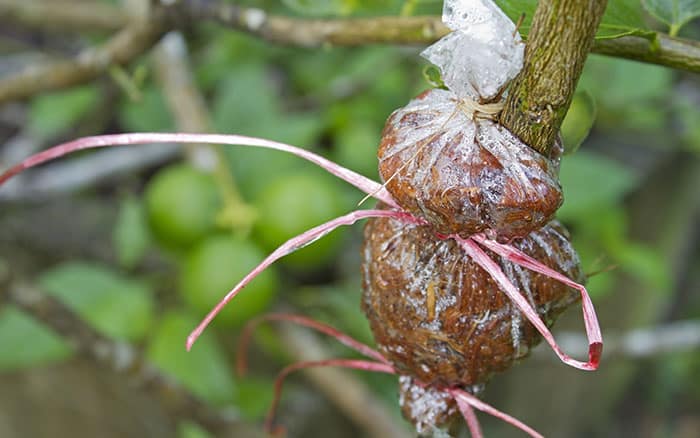Having houseplants in your home is a wonderful way of bringing some nature indoors. Sometimes they may become overgrown, but this doesn’t mean you need to chop it down straight away. Instead, by air layering you can propagate them to give you a whole new houseplant or garden plant.
What is air layering?

This technique is a way of creating a new plant from an existing overgrown one by rooting the stems whilst they are attached to the parent plant. This means you can make the most of your plants and even have many more to gift to loved ones or place in other positions in your home.
How do I do it?
Step one
To do this, you’ll need to find a section of the stem that is a few inches long, around where you want to prune away from.
Step two
Then get a clean knife and notch all around the stem, ensuring you don’t cut all the way through it.
Step three
After, make a second notch around the stem an inch below and remove the ring of bark between the two cuts.

Step four
Then, I usually rub a bit of rooting hormone onto this bare spot to encourage root development.
Step five
Next, wrap the section with some moist sphagnum moss and pack it around slightly so it’s about 7-10cm thick. Then loosely wrap that area with plastic, securing it in place with ties or tape.
You can use plastic such as cling film or a cut up sandwich bag when propagating houseplants, but for outdoor plants that take a while to root it’s ideal to use black plastic instead.
Step six
Leave the wrapping in place and eventually you will start to see roots through the plastic or be able to feel that the moss is filling with roots. Then, you can cut below the moss section, unwrap the plastic and pot it up individually as a new houseplant.
Step seven
When the new plant is in its new pot, keep it in a spot with bright but indirect light and well-watered. Within a few weeks the new plant should be well-established and should be ready to move into its new spot in your home.
Houseplants to air layer

Air layering can be used on indoor and outdoor plants. Some outdoor plants that you can use this technique on are Ficus, Acers, Cornus, and Hamamelis.
Some houseplants you can propagate using air layering are Ficus elastica (rubber tree), Ficus benjamina (weeping fig).

Good thing